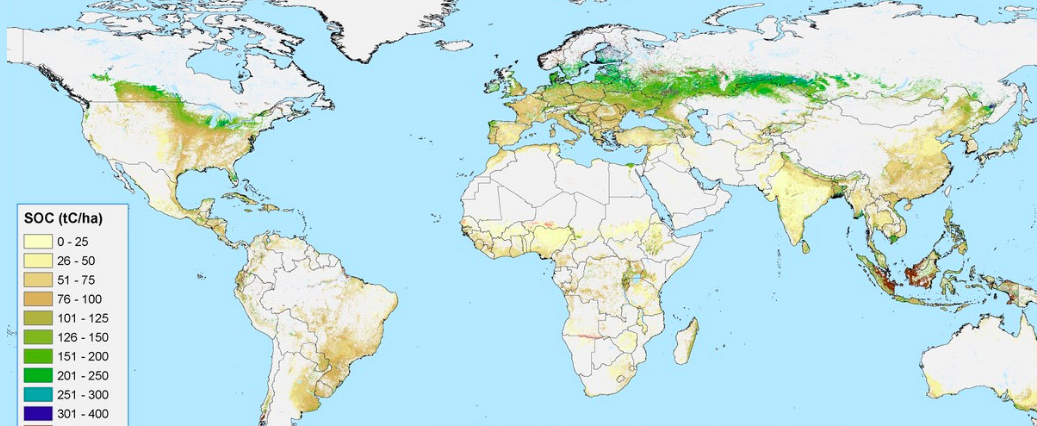New Study: Up to 7 Billion Tonnes of Carbon Dioxide Can Be Removed From the Atmosphere Each Year Through Better Soil Management on Farmland
Author: | Published: November 14, 2017
By better managing farmland soil, the amount of carbon stored in the top 30 centimeters of the soil could increase an extra 0.9 to 1.85 gigatons each year, say authors of a new study published today in Scientific Reports.
This is equivalent to carbon globally emitted by the transport sector (1.87 gigatons of Carbon); and equivalent to 3 – 7 billion tonnes of CO2 which could be removed from the atmosphere. For comparison, the US emits 5 billion tonnes of CO2 equivalent each year (Edgar database, 2015).
The maps in the new study show how much carbon could be stored per hectare each year, which will be vital for designing global mitigation strategies, for achieving targets set out in the Paris Climate Agreement.
Since the industrial revolution, 50-70 percent of carbon stored in the soil has been lost to the atmosphere, contributing to harmful greenhouse gas emissions in the form of carbon dioxide. Since farmland is already intensively managed, improving the way it is managed is a practical step to reduce carbon in the atmosphere, say authors.
Dr. Robert Zomer, from the Kunming Institute of Botany, Chinese Academy of Sciences and lead-author of the study, said: “Our finding show that turning soils into carbon sinks can sequester significant amounts of carbon in cropland soils. Our research shows soils can be part of the solution to combat climate change – and by doing so we can improve soil health.
The findings illustrate that most of the world’s carbon is stored in cooler, wetter, parts of the world in the northern hemisphere; and less in the tropics where it is hotter or drier. North America, Russia and Europe currently store for over half of the world’s carbon in croplands.
The United States showed the highest total annual potential to store carbon in the soil, followed by India, China, Russian and Australia, if management is improved. The improved practices, among others, include, using compost or (green) manure, mulching, zero tillage, cover cropping, and other regenerative and natural climate solutions, such as agroforestry.

